Laser-assisted cataract surgery versus standard ultrasound phacoemulsification cataract surgery
- PMID: 37369549
- PMCID: PMC10288823
- DOI: 10.1002/14651858.CD010735.pub3
Laser-assisted cataract surgery versus standard ultrasound phacoemulsification cataract surgery
Abstract
Background: Cataract is the leading cause of blindness in the world and, as such, cataract surgery is one of the most commonly performed operations globally. Surgical techniques have changed dramatically over the past half century with associated improvements in outcomes and safety. Femtosecond lasers can be used to perform the key steps in cataract surgery, such as corneal incisions, lens capsulotomy and fragmentation. The potential advantage of femtosecond laser-assisted cataract surgery (FLACS) is greater precision and reproducibility of these steps compared to manual techniques. The disadvantages are the costs associated with FLACS technology.
Objectives: To compare the effectiveness and safety of FLACS with standard ultrasound phacoemulsification cataract surgery (PCS) by gathering evidence from randomised controlled trials (RCTs).
Search methods: We searched the Cochrane Central Register of Controlled Trials (CENTRAL; which contains the Cochrane Eyes and Vision Trials Register; 2022, Issue 5); Ovid MEDLINE; Ovid Embase; LILACS; the ISRCTN registry; ClinicalTrials.gov; the WHO ICTRP and the US Food and Drug Administration (FDA) website. We did not use any date or language restrictions in the electronic searches for trials. We last searched the electronic databases on 10 May 2022.
Selection criteria: We included RCTs where FLACS was compared to PCS.
Data collection and analysis: Three review authors independently screened the search results, assessed risk of bias and extracted data using the standard methodological procedures expected by Cochrane. The primary outcome for this review was intraoperative complications in the operated eye, namely anterior capsule, and posterior capsule tears. The secondary outcomes included corrected distance visual acuity (CDVA), quality of vision (as measured by any validated patient-reported outcome measure (PROM)), postoperative cystoid macular oedema complications, endothelial cell loss and cost-effectiveness. We assessed the certainty of the evidence using GRADE.
Main results: We included 42 RCTs conducted in Europe, North America, South America and Asia, which enrolled a total of 7298 eyes of 5831 adult participants. Overall, the studies were at unclear or high risk of bias. In 16 studies the authors reported financial links with the manufacturer of the laser platform evaluated in their studies. Thirteen of the studies were within-person (paired-eye) studies with one eye allocated to one procedure and the other eye allocated to the other procedure. These studies were reported ignoring the paired nature of the data. There was low-certainty evidence of little or no difference in the odds of developing anterior capsular tears when comparing FLACS and PCS (Peto odds ratio (OR) 0.83, 95% confidence interval (CI) 0.40 to 1.72; 5835 eyes, 27 studies) There was one fewer anterior capsule tear per 1000 operations in the FLACS group compared with the PCS group (95% CI 4 fewer to 3 more). There was low-certainty evidence of lower odds of developing posterior capsular tears with FLACS compared to PCS (Peto OR 0.50, 95% CI 0.25 to 1.00; 5767 eyes, 26 studies). There were four fewer posterior capsule tears per 1000 operations in the FLACS group compared with the PCS group (95% CI 6 fewer to same). There was moderate-certainty evidence of a very small advantage for the FLACS arm with regard to CDVA at six months or more follow-up, (mean difference (MD) -0.01 logMAR, 95% CI -0.02 to 0.00; 1323 eyes, 7 studies). This difference is equivalent to 1 logMAR letter between groups and is not thought to be clinically important. From the three studies (1205 participants) reporting a variety of PROMs (Cat-PROMS, EQ-5D, EQ-SD-3L, Catquest9-SF and patient survey) up to three months following surgery, there was moderate-certainty evidence of little or no difference in the various parameters between the two treatment arms. There was low-certainty evidence of little or no difference in the odds of developing cystoid macular oedema when comparing FLACS and PCS (Peto OR 0.84, 95% CI 0.56 to 1.28; 4441 eyes, 18 studies). There were three fewer cystoid macular oedema cases per 1000 operations in the FLACS group compared with the PCS group (95% CI 10 fewer to 6 more). In one study the incremental cost-effectiveness ratio (ICER) (cost difference divided by quality-adjusted life year (QALY) difference) was GBP £167,620 when comparing FLACS to PCS. In another study, the ICER was EUR €10,703 saved per additional patient who had treatment success with PCS compared to FLACS. Duration ranged from three minutes in favour of FLACS to eight minutes in favour of PCS (I2 = 100%, 11 studies) (low-certainty evidence). There was low-certainty evidence of little or no important difference in endothelial cell loss when comparing FLACS with PCS (MD 12 cells per mm2 in favour of FLACS, 95% CI -40 to 64; 1512 eyes, 10 studies). AUTHORS' CONCLUSIONS: This review of 42 studies provides evidence that there is probably little or no difference between FLACS and PCS in terms of intraoperative and postoperative complications, postoperative visual acuity and quality of life. Evidence from two studies suggests that FLACS may be the less cost-effective option. Many of the included studies only investigated very specific outcome measures such as effective phacoemulsification time, endothelial cell count change or aqueous flare, rather than those directly related to patient outcomes. Standardised reporting of complications and visual and refractive outcomes for cataract surgery would facilitate future synthesis, and guidance on this has been recently published.
Antecedentes: La catarata es la principal causa de ceguera en el mundo y, como tal, la cirugía de cataratas es una de las operaciones más realizadas en todo el mundo. Las técnicas quirúrgicas han cambiado radicalmente en el último medio siglo, con las consiguientes mejoras en los desenlaces y la seguridad. Los láseres de femtosegundo se pueden utilizar para realizar los pasos clave de la cirugía de cataratas, como las incisiones corneales, la capsulotomía y la fragmentación del cristalino. La ventaja potencial de la cirugía de cataratas asistida por láser de femtosegundo (FLACS por sus siglas en inglés) es la mayor precisión y reproducibilidad de estos pasos en comparación con las técnicas manuales. Las desventajas son los costes asociados con la tecnología FLACS.
Objetivos: Comparar la eficacia y la seguridad de la FLACS con la cirugía de cataratas estándar por facoemulsificación (PCS) con ultrasonido mediante la recopilación de evidencia de ensayos controlados aleatorizados (ECA). MÉTODOS DE BÚSQUEDA: Se realizaron búsquedas en el Registro Cochrane central de ensayos controlados (Cochrane Central Register of Controlled Trials [CENTRAL]; que contiene el Registro de ensayos del Grupo Cochrane de Salud ocular y de la visión [Cochrane Eyes and Vision]; 2022, número 5); en Ovid MEDLINE; Ovid Embase; LILACS; el registro ISRCTN; ClinicalTrials.gov; la ICTRP de la OMS y el sitio web de la Food and Drug Administration (FDA) de los EE. UU. No se aplicaron restricciones de fecha ni de idioma en las búsquedas electrónicas de ensayos. La última búsqueda en las bases de datos electrónicas se realizó el 10 de mayo de 2022. CRITERIOS DE SELECCIÓN: Se incluyeron los ECA en los que la FLACS se comparó con la PCS. OBTENCIÓN Y ANÁLISIS DE LOS DATOS: Tres autores de la revisión examinaron de forma independiente los resultados de la búsqueda, evaluaron el riesgo de sesgo y extrajeron los datos mediante los procedimientos metodológicos estándar previstos por Cochrane. El desenlace principal de esta revisión fueron las complicaciones intraoperatorias en el ojo operado, concretamente, desgarros de la cápsula anterior y posterior. Los desenlaces secundarios incluyeron la agudeza visual corregida a distancia (AVCD), la calidad de la visión (medida por cualquier medida de desenlace notificada por el paciente [PROM] validada), las complicaciones posoperatorias del edema macular cistoide, la pérdida de células endoteliales y la coste‐efectividad. La certeza de la evidencia se evaluó mediante el método GRADE.
Resultados principales: Se incluyeron 42 ECA realizados en Europa, Norteamérica, Sudamérica y Asia, que reclutaron un total de 7298 ojos de 5831 participantes adultos. En general, los estudios tuvieron riesgo de sesgo incierto o alto. En 16 estudios, los autores informaron vínculos financieros con el fabricante de la plataforma láser evaluada en sus estudios. Trece de los estudios fueron estudios intrapersonales (ojo pareado) con un ojo asignado a un procedimiento y el otro ojo asignado al otro procedimiento. El informe de estos estudios no consideró la naturaleza pareada de los datos. Hubo evidencia de certeza baja de poca o ninguna diferencia en las probabilidades de desarrollar desgarros de la cápsula anterior al comparar FLACS y PCS (odds ratio [OR] de Peto 0,83; intervalo de confianza [IC] del 95%: 0,40 a 1,72; 5835 ojos, 27 estudios). Hubo un desgarro de la cápsula anterior menos por cada 1000 cirugías en el grupo de FLACS en comparación con el grupo de PCS (IC del 95%: 4 menos a 3 más). Hubo evidencia de certeza baja de menores probabilidades de desarrollar desgarros de la cápsula posterior con FLACS en comparación con PCS (OR de Peto 0,50; IC del 95%: 0,25 a 1,00; 5767 ojos, 26 estudios). Hubo cuatro desgarros de la cápsula posterior menos por cada 1000 cirugías en el grupo de FLACS en comparación con el grupo de PCS (IC del 95%: 6 menos a igual). Hubo evidencia de certeza moderada de una ventaja muy pequeña en el grupo de FLACS con respecto a la AVCD a los seis meses o más de seguimiento, (diferencia de medias [DM] ‐0,01 logMAR; IC del 95%: ‐0,02 a 0,00; 1323 ojos, siete estudios). Esta diferencia equivale a 1 letra logMAR entre los grupos y no se considera clínicamente importante. De los tres estudios (1205 participantes) que informaron sobre una variedad de PROM (Cat‐PROMS, EQ‐5D, EQ‐SD‐3L, Catquest9‐SF y encuesta de pacientes) hasta tres meses después de la cirugía, hubo evidencia de certeza moderada de poca o ninguna diferencia en los diversos parámetros entre los dos grupos de tratamiento. Hubo evidencia de certeza baja de poca o ninguna diferencia en las probabilidades de desarrollar edema macular cistoide al comparar FLACS y PCS (OR de Peto 0,84; IC del 95%: 0,56 a 1,28; 4441 ojos, 18 estudios). Hubo tres casos menos de edema macular cistoide por cada 1000 cirugías en el grupo de FLACS en comparación con el grupo de PCS (IC del 95%: 10 menos a 6 más). En un estudio, el cociente coste‐efectividad incremental (ICER) (diferencia de coste dividida por la diferencia de años de vida ajustados por la calidad [AVAC]) fue de 167 620 GBP al comparar FLACS con SCP. En otro estudio, el ICER fue de 10 703 euros ahorrados por paciente adicional que tuvo un tratamiento exitoso con PCS en comparación con FLACS. La duración varió entre tres minutos a favor de FLACS y ocho minutos a favor de PCS (I 2 = 100%, 11 estudios) (evidencia de certeza baja). Hubo evidencia de certeza baja de poca o ninguna diferencia importante en la pérdida de células endoteliales al comparar la FLACS con la PCS (DM 12 células por mm 2 a favor de la FLACS; IC del 95%: ‐40 a 64; 1512 ojos, 10 estudios). CONCLUSIONES DE LOS AUTORES: Esta revisión de 42 estudios aporta evidencia de que probablemente haya poca o ninguna diferencia entre la FLACS y la PCS en cuanto a las complicaciones intraoperatorias y posoperatorias, la agudeza visual posoperatoria y la calidad de vida. La evidencia de dos estudios indica que la FLACS podría ser la opción menos coste‐efectiva. Muchos de los estudios incluidos solo investigaron medidas de desenlace muy específicas, como el tiempo efectivo de facoemulsificación, el cambio en el recuento de células endoteliales o el brote acuoso, en lugar de las directamente relacionadas con los desenlaces de los pacientes. La notificación estandarizada de las complicaciones y los desenlaces visuales y refractarios de la cirugía de cataratas facilitaría la síntesis futura, y recientemente se han publicado guías al respecto.
Copyright © 2023 The Cochrane Collaboration. Published by John Wiley & Sons, Ltd.
Conflict of interest statement
Alex Day was the sub‐Principal Investigator for the FACT trial (ISRCTN77602616). Catey Bunce is a Co‐Applicant for the ongoing FACT trial (ISRCTN77602616).
Akshay Narayan, Daniel Gore, Jennifer Evans: none to declare.
Figures

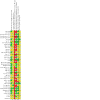
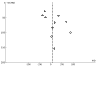

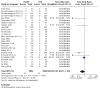
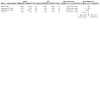
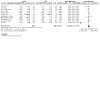
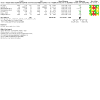
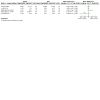

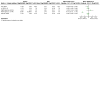
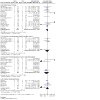
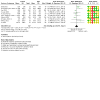
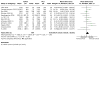


Update of
-
Laser-assisted cataract surgery versus standard ultrasound phacoemulsification cataract surgery.Cochrane Database Syst Rev. 2016 Jul 8;7(7):CD010735. doi: 10.1002/14651858.CD010735.pub2. Cochrane Database Syst Rev. 2016. Update in: Cochrane Database Syst Rev. 2023 Jun 23;6:CD010735. doi: 10.1002/14651858.CD010735.pub3. PMID: 27387849 Free PMC article. Updated.
References
References to studies included in this review
Chee 2021 {published data only}
-
- Chee SP, Yang Y, Wong M. Randomized controlled trial comparing femtosecond laser-assisted with conventional phacoemulsification on dense cataracts. American Journal of Ophthalmology 2021;229:1-7. - PubMed
Chen 2019 {published data only}
-
- Chen J, Wang D, Zheng J, Gao C. Efficacy of femtosecond laser-assisted phacoemulsification for cataract patients and its influence on serum levels of Inflammatory factors. Journal of the College of Physicians and Surgeons Pakistan 2019;29(2):123-7. - PubMed
Conrad‐Hengerer 2013 {published data only}
-
- Conrad-Hengerer I, Al Juburi M, Schultz T, Hengerer FH, Dick HB. Corneal endothelial cell loss and corneal thickness in conventional compared with femtosecond laser-assisted cataract surgery: three-month follow-up. Journal of Cataract and Refractive Surgery 2013;39(9):1307-13. - PubMed
Conrad‐Hengerer 2014 {published data only}
-
- Conrad-Hengerer I, Hengerer FH, Al Juburi M, Schultz T, Dick HB. Femtosecond laser-induced macular changes and anterior segment inflammation in cataract surgery. Journal of Refractive Surgery 2014;30(4):222-6. - PubMed
Conrad‐Hengerer 2015 {published data only}
-
- Conrad-Hengerer I, Al Sheikh M, Hengerer FH, Schultz T, Dick HB. Comparison of visual recovery and refractive stability between femtosecond laser-assisted cataract surgery and standard phacoemulsification: six-month follow-up. Journal of Cataract and Refractive Surgery 2015;41(7):1356-64. - PubMed
Day 2020 {published data only}
-
- Day AC, Burr JM, Bennett K, Bunce C, Dore CJ, Rubin GS, et al. Femtosecond laser–assisted cataract surgery compared with phacoemulsification cataract surgery: a randomized noninferiority trial with 1-year outcomes. Journal of Cataract and Refractive Surgery 2020;46(10):1360-7. - PubMed
-
- ISRCTN77602616. The FACT trial: a randomised comparison of Femtosecond laser-assisted vs. manual phacoemulsification CataracT surgery for adults with visually significant cataract. www.isrctn.com/ISRCTN77602616 (accessed 28 June 2016).
Dick 2014 {published data only}
-
- Dick HB, Conrad-Hengerer I, Schultz T. Intraindividual capsular bag shrinkage comparing standard and laser-assisted cataract surgery. Journal of Refractive Surgery 2014;30(4):228-33. - PubMed
Donnenfeld 2018 {published data only}
-
- Donnenfeld E, Rosenberg E, Boozan H, Davis Z, Nattis A. Randomized prospective evaluation of the wound integrity of primary clear corneal incisions made with a femtosecond laser versus a manual keratome. Journal of Cataract and Refractive Surgery 2018;44(3):329-35. - PubMed
-
- Donnenfeld E, Rosenberg E, Boozan H, Davis Z, Nattis A. Randomized prospective evaluation of the wound integrity of primary clear corneal incisions made with a femtosecond laser versus a manual keratome. Journal of Cataract and Refractive Surgery 2018;44(3):329-35. - PubMed
Dzhaber 2020 {published data only}
-
- Dzhaber D, Mustafa O, Alsaleh F, Mihailovic A, Daoud YJ. Comparison of changes in corneal endothelial cell density and central corneal thickness between conventional and femtosecond laser-assisted cataract surgery: a randomised, controlled clinical trial. British Journal of Ophthalmology 2020;104(2):225-9. - PubMed
Filkorn 2012 {published data only}
-
- Filkorn T, Kovács I, Takács A, Horváth E, Knorz MC, Nagy ZZ. Comparison of IOL power calculation and refractive outcome after laser refractive cataract surgery with a femtosecond laser versus conventional phacoemulsification. Journal of Refractive Surgery 2012;28(8):540-4. - PubMed
Hansen 2020 {published data only}
Hida 2014 {published data only}
-
- Hida WT, Chaves MA, Gonçalves MR, Tzeliks PF, Nakano CT, Motta AF, et al. Comparison between femtosecond laser capsulotomy and manual continuous curvilinear digital image guided capsulorrhexis [Comparação entre capsulotomia assistida por laser de femtossegundoe capsulorrexe curvilínea contínua guiada por imagem digita]. Revista Brasileira de Oftalmologia 2014;73(6):329-34.
Hida 2017 {published data only}
Kanellopoulos 2016 {published data only}
Khan 2017 {published data only}
-
- Khan MS, Habib A, Ishaq M, Yaqub MA. Effect of femtosecond laser-assisted cataract surgery (FLACS) on endothelial cell count. Journal of the College of Physicians and Surgeons Pakistan 2017;27(12):763-6. - PubMed
Kovacs 2014 {published data only}
-
- Kovács I, Kránitz K, Sándor GL, Knorz MC, Donnenfeld ED, Nuijts RM, et al. The effect of femtosecond laser capsulotomy on the development of posterior capsule opacification. Journal of Refractive Surgery 2014;30(3):154-8. - PubMed
Kránitz 2012 {published data only}
-
- Kránitz K, Miháltz K, Sándor GL, Takacs A, Knorz MC, Nagy ZZ. Intraocular lens tilt and decentration measured by Scheimpflug camera following manual or femtosecond laser-created continuous circular capsulotomy. Journal of Refractive Surgery 2012;28(4):259-63. - PubMed
Krarup 2021 {published data only}
-
- Krarup T, Rose K, Mensah AMA, la Cour M, Holm LM. Comparing corneal outcome between femtosecond laser-assisted cataract surgery and conventional phacosurgery in Fuchs’ endothelial dystrophy patients: a randomized pilot study with 6mo follow up. International Journal of Ophthalmology 2021 ;14(5):684-92. - PMC - PubMed
Liu 2021 {published data only}
Mastropasqua 2014a {published data only}
-
- Mastropasqua L, Toto L, Mastropasqua A, Vecchiarino L, Mastropasqua R, Pedrotti E, et al. Femtosecond laser versus manual clear corneal incision in cataract surgery. Journal of Refractive Surgery 2014;30(1):27-33. - PubMed
Mastropasqua 2014b {published data only}
-
- Mastropasqua L, Toto L, Mattei PA, Vecchiarino L, Mastropasqua A, Navarra R, et al. Optical coherence tomography and 3-dimensional confocal structured imaging system-guided femtosecond laser capsulotomy versus manual continuous curvilinear capsulorhexis. Journal of Cataract and Refractive Surgery 2014;40(12):2035-43. - PubMed
Menapace 2022 {published data only}
Mursch‐Edlmayr 2017 {published data only}
-
- Mursch-Edlmayr AS, Bolz M, Luft N, Ring M, Kreutzer T, Ortner C, et al. Intraindividual comparison between femtosecond laser–assisted and conventional cataract surgery. Journal of Cataract and Refractive Surgery 2017;43(2):215-22. - PubMed
-
- NCT01991717. An open-label investigator-masked study comparing femtosecond laser assisted with conventional phacoemulsification cataract surgery . clinicaltrials.gov/ct2/show/NCT01991717 (accessed 27 June 2016).
Nagy 2011 {published data only}
-
- Nagy ZZ, Kránitz K, Takacs AI, Miháltz K, Kovács I, Knorz MC. Comparison of intraocular lens decentration parameters after femtosecond and manual capsulotomies. Journal of Refractive Surgery 2011;27(8):564-9. - PubMed
Nagy 2014 {published data only}
-
- Nagy ZZ, Dunai A, Kránitz K, Takács AI, Sándor GL, Hécz R, et al. Evaluation of femtosecond laser-assisted and manual clear corneal incisions and their effect on surgically induced astigmatism and higher-order aberrations. Journal of Refractive Surgery 2014;30(8):522-5. - PubMed
Oka 2021 {published data only}
Pahlitzsch 2018 {published data only}
-
- Pahlitzsch M, Pahlitzsch ML, Sumarni U, Pahlitzsch T. Can we improve the efficacy of modern cataract surgery by using different tip designs? A comparison of balanced and tapered tip in femtosecond laser-assisted cataract surgery and manual phacoemulsification. Clinical and Experimental Ophthalmology 2018;46(1):35-45. - PubMed
Pajic 2017 {published data only}
-
- NCT02351271. A single centre randomized eye study to compare the performance and safety of femtosecond laser-assisted cataract procedures with conventional ultrasound-assisted cataract surgery . clinicaltrials.gov/ct2/show/NCT02351271 (accessed 27 June 2016).
Panthier 2017 {published data only}
-
- Panthier C, Costantini F, Rigal-Sastourné JC, Brézin A, Mehanna C, Guedj M, Monnet D. Change of capsulotomy over 1 year in femtosecond laser-assisted cataract surgery and Its impact on visual quality. Journal of Refractive Surgery 2017;33(1):44-9. - PubMed
Parra‐Rodríguez 2016 {published data only}
-
- Parra-Rodríguez DS, Sierra Acevedo GA, Nieto Aguilarb MV, Cantero Vergaraca MA. Endothelial cell loss in cataract operated patients with manual phacoemulsification and femtosecond laser-assisted in 2015 in the Central Military Hospital in Mexico [Pérdida celular endotelial en pacientes operados decatarata por facoemulsificación manual y en técnicaasistida con láser de femtosegundo en el 2015 en el Hospital Central Militar]. Revista Mexicana de Oftalmología 2017;91(5): 241-6.
Pedroza 2016 {published data only}
-
- Pedroza GG, Bailóna KP, Morenoby SP, Fernández de Ortegac L. Endothelial cell count and central corneal volume in conventional phacoemulsification compared with femtosecond laser-assisted surgery [Grosor corneal central y conteo de células endotelialesen pacientes sometidos a cirugía de catarata asistidacon láser de femtosegundos comparada con cirugíafacoemulsificación tradicional]. Revista Mexicana de Oftalmologia 2016;90(5):223-8.
Reddy 2013 {published data only}
-
- Reddy KP, Kandulla J, Auffarth GU. Effectiveness and safety of femtosecond laser-assisted lens fragmentation and anterior capsulotomy versus the manual technique in cataract surgery. Journal of Cataract and Refractive Surgery 2013;39(9):1297-306. - PubMed
Roberts 2019 {published data only}
-
- NCT02825693. Femtosecond laser assisted cataract surgery in the NHS. clinicaltrials.gov/ct2/show/NCT02825693 (first received 7 July 2016).
-
- Roberts HW, Wagh VK, Sullivan DL, Hidzheva P, Detesan DI, Heemraz BS, et al. A randomized controlled trial comparing femtosecond laser-assisted cataract surgery versus conventional phacoemulsification surgery. Journal of Cataract and Refractive Surgery 2018;45(1):11-20. - PubMed
-
- Stanojcic N, Roberts H, Wagh V, Li O, Naderi K, O'Brart D. A randomized controlled trial comparing femtosecond laser–assisted cataract surgery versus conventional phacoemulsification surgery: 12-month results. British Journal of Ophthalmology 2021;105(5):631-8. - PubMed
Schargus 2015 {published data only}
-
- Schargus M, Suckert N, Schultz T, Kakkassery V, Dick BH. Femtosecond laser-assisted cataract surgery without OVD: a prospective intraindividual comparison. Journal of Refractive Surgery 2015;31(3):146-52. - PubMed
Schroeter 2021 {published data only}
Schwarzenbacher 2020 {published data only}
-
- Schwarzenbacher L, Schartmüller D, Leydolt C, Menapace R. Intraindividual comparison of cytokine and prostaglandin levels with and without low-energy, high-frequency femtosecond laser cataract pretreatment after single-dose topical NSAID application. Journal of Cataract and Refractive Surgery 2020 ;46(8):1086-91. - PubMed
Schweitzer 2020 {published data only}
-
- NCT01982006. Economic evaluation of Femtosecond Laser Assisted Cataract Surgery (FEMCAT) [Impact médico-economique de la chirurgie de la cataracte au laser femtoseconde]. clinicaltrials.gov/ct2/show/NCT01982006 (accessed 27 June 2016).
-
- Schweitzer C, Brezin A, Cochener B, Monnet D, Germain C, Roseng S, et al. Femtosecond laser-assisted versus phacoemulsification cataract surgery (FEMCAT): a multicentre participant-masked randomised superiority and cost-effectiveness trial. Lancet 2020;395 (10219):212-24. - PubMed
Takacs 2012 {published data only}
-
- Takács AI, Kovács, I, Miháltz K, Filkorn T, Knorz MC, Nagy ZZ. Central corneal volume and endothelial cell count following femtosecond laser-assisted refractive cataract surgery compared to conventional phacoemulsification. Journal of Refractive Surgery 2012;28(6):387-91. - PubMed
Vasvada 2019 {published data only}
-
- Vasvada VA, Vasavada S, Vasavada AR, Vasavada V, Srivastava S. Comparative evaluation of femtosecond laser–assisted cataract surgery and conventional phacoemulsification in eyes with a shallow anterior chamber. Journal of Cataract and Refractive Surgery 2019;45(5):547-52. - PubMed
Yu 2015 {published data only}
Yu 2016 {published data only}
-
- NCT02492659. Clinical research of femtosecond laser-assisted cataract surgery: randomized clinical trial . clinicaltrials.gov/ct2/show/NCT02492659 (accessed 27 June 2016).
-
- Yu AY, Lin CX, Wang QM, Zheng MQ, Qin XY. Safety of femtosecond laser-assisted cataract surgery: assessment of aqueous humour and lens capsule. Acta Ophthalmologica 2016;94(7):e534–40. - PubMed
Zhang 2016 {published data only}
-
- Zhang GB, Ye XY, Chen W, Mao ZH, Wang L, Li MQ. Clinic analysis of femtosecond laser-assisted cataract surgery [飞秒激光辅助白内障摘除手术的临床分析]. Zhonghua yan ke za zhi [Chinese Journal of Ophthalmology] 2016;52(2):93-8. - PubMed
References to studies excluded from this review
Chen 2022 {published data only}
-
- Chen Z, Wu Y, Sun Y, Kong L, Chen M, Liu Z. Adjusted femtosecond laser capsulotomy distance in white cataracts to decrease incomplete capsulotomy: a randomized comparative cohort study. Graefes Archive for Clinical and Experimental Ophthalmology 2022 ;260(8):2591-5. - PubMed
Conrad‐Hengerer 2012a {published data only}
-
- Conrad-Hengerer I, Hengerer FH, Schultz T, Dick HB. Effect of femtosecond laser fragmentation on effective phacoemulsification time in cataract surgery. Journal of Refractive Surgery 2012;28(12):879-83. - PubMed
Conrad‐Hengerer 2013b {published data only}
-
- Conrad-Hengerer I, Hengerer FH, Schultz T, Dick HB. Femtosecond laser–assisted cataract surgery in eyes with a small pupil. Journal of Cataract and Refractive Surgery 2013;39(9):1314-20. - PubMed
Conrad‐Hengerer 2014b {published data only}
-
- Conrad-Hengerer I, Schultz T, Jones JJ, Hengerer FH, Dick B. Cortex removal after laser cataract surgery and standard phacoemulsification: a critical analysis of 800 consecutive cases. Journal of Refractive Surgery 2014;30(8):516-20. - PubMed
Ecsedy 2011 {published data only}
-
- Ecsedy M, Mihaltz K, Kovacs I, Takacs A, Filkorn T, Nagy ZZ. Effect of femtosecond laser cataract surgery on the macula. Journal of Refractive Surgery 2011;27(10):717-22. - PubMed
Espaillat 2016 {published data only}
Ganesh 2020 {published data only}
-
- Ganesh S, Brar S, Reddy Arra R. Comparison of astigmatism correction between anterior penetrating and intrastromal arcuate incisions in eyes undergoing femtosecond laser-assisted cataract surgery. Journal of Cataract and Refractive Surgery 2020 ;46(3):394-402. - PubMed
Hatch 2015 {published data only}
-
- Hatch KM, Schultz T, Talamo JH, Dick BH. Femtosecond laser-assisted compared with standard cataract surgery for removal of advanced cataracts. Journal of Cataract and Refractive Surgery 2015;41(9):1833-8. - PubMed
Kerr 2013 {published data only}
-
- Kerr NM, Abell RG, Vote BJ, Toh T. Intraocular pressure during femtosecond laser pretreatment of cataract. Journal of Cataract and Refractive Surgery 2013;39(3):339-42. - PubMed
Kránitz 2011 {published data only}
-
- Kránitz K, Takacs A, Mihaltz K, Kovacs I, Knorz MC, Nagy ZZ. Femtosecond laser capsulotomy and manual continuous curvilinear capsulorrhexis parameters and their effects on intraocular lens centration. Journal of Refractive Surgery 2011;27(8):558-63. - PubMed
Krarup 2014 {published data only}
-
- Krarup T, Holm LM, la Cour M, Kjaerbo H. Endothelial cell loss and refractive predictability in femtosecond laser-assisted cataract surgery compared with conventional cataract surgery. Acta Ophthalmologica 2014;92(7):617-22. - PubMed
Nagy 2012 {published data only}
-
- Nagy Z. Results of femtosecond laser assisted cataract surgery, indication and patient selection. Acta Ophthalmologica 2012;90:20.
Pisciotta 2018 {published data only}
-
- Pisciotta A, De Maria M, Verdina T, Fornasari E, De Pol A, Cavallini GM. Anterior capsule of the lens: comparison of morphological properties and apoptosis induction following FLACS and standard phacoemulsification surgery. BioMed Research International 2018 ;2018:7242837. [DOI: 10.1155/2018/7242837] - DOI - PMC - PubMed
Ranjini 2017 {published data only}
Szigeti 2012 {published data only}
-
- Szigeti A, Krantiz K, Takacs AI, Mihaltz K, Knorz MC, Nagy ZZ. Comparison of long-term visual outcome and IOL position with a single-optic accommodating IOL after 5.5- or 6.0-mm femtosecond laser capsulotomy. Journal of Refractive Surgery 2012;28(9):609-13. - PubMed
Toto 2015 {published data only}
-
- Toto L, Mastropasqua R, Mattei PA, Agnifili L, Mastropasqua A, Falconio G, et al. Postoperative IOL axial movements and refractive changes after femtosecond laser-assisted cataract surgery versus conventional phacoemulsification. Journal of Refractive Surgery 2015;31(8):524-30. - PubMed
Vasquez‐Perez 2018 {published data only}
Wang 2015 {published data only}
-
- Wang XL, Zhang R, Li Q, Ding Q. Preliminary observation of refractive cataract surgery assisted by femtosecond laser. International Eye Science 2015;15(12):2149-51.
References to ongoing studies
NCT01693211 {published data only}
-
- NCT01693211. Prospective evaluation of circularity and diameter of femtosecond laser versus manual anterior capsulotomy in Singapore National Eye Centre. clinicaltrials.gov/ct2/show/NCT01693211 (accessed 27 June 2016).
NCT01769313 {published data only}
-
- NCT01769313. A single centre study to analyze cataract surgery following femtosecond laser-assisted and manual cataract surgery. clinicaltrials.gov/ct2/show/NCT01769313 (accessed 27 June 2016).
NCT01971177 {published data only}
-
- NCT01971177. Addressing efficacy and safety of femtosecond-laser assisted versus manual lens fragmentation procedure. clinicaltrials.gov/ct2/show/NCT01971177 (accessed 27 June 2016).
NCT02110212 {published data only}
-
- NCT02110212. Femtosecond laser for cataract surgery. clinicaltrials.gov/ct2/show/NCT02110212 (accessed 27 June 2016).
NCT02403206 {published data only}
-
- NCT02403206. Femtosecond laser assisted cataract surgery in intumescent cataracts. clinicaltrials.gov/ct2/show/NCT02403206 (accessed 27 June 2016).
NCT02561104 {published data only}
-
- NCT02561104. Outcomes of resident-performed laser-assisted versus manual traditional phacoemulsification. clinicaltrials.gov/ct2/show/NCT02561104 (accessed 27 June 2016).
NCT02974140 {published data only}
-
- NCT02974140. A prospective, multicenter, randomized evaluation of refractive predictability in patients with or without corneal astigmatism (maximum allowable up to 1.25D) when using the cataract refractive suite and standard manual techniques. https://clinicaltrials.gov/ct2/show/NCT02974140 (first received 28 November 2016).
NCT03050008 {published data only}
-
- NCT03050008. Randomized, controlled trial in patients with senile cataract to evaluate the efficacy of ultrasound-free femtosecond laser (FLACS) cataract surgery (USFREE), compared to traditional phacoemulsification surgery using ultrasound. https://clinicaltrials.gov/ct2/show/NCT03050008 (first received 10 February 2017).
Additional references
Abell 2015
-
- Abell RG, Darian-Smith E, Kan JB, Allen PL, Ewe SY, Vote BJ. Femtosecond laser-assisted cataract surgery versus standard phacoemulsification cataract surgery: outcomes and safety in more than 4000 cases at a single center. Journal of Cataract and Refractive Surgery 2015;41(1):47-52. - PubMed
Annual Report 2022 National Cataract Audit
-
- Donachie PHJ, Buchan JC. National Ophthalmology Database Audit Year 6 Annual Report - The Fifth Prospective Report of the National Ophthalmology Database Audit NHS or equivalent Funded Cataract Surgery for the 2020 NHS year: 01 April 2020 to 31 March 2021. Royal College of Ophthalmologists April 2022.
Chee 2015
-
- Chee SP, Yang Y, Ti SE. Clinical outcomes in the first two years of femtosecond laser-assisted cataract surgery. American Journal of Ophthalmology 2015;159(4):714-9. - PubMed
Day 2014
-
- Day AC, Gartry DS, Maurino V, Allan BD, Stevens JD. Efficacy of anterior capsulotomy creation in femtosecond laser-assisted cataract surgery. Journal of Cataract and Refractive Surgery 2014;40(12):2031-4. - PubMed
Deeks 2017
-
- Deeks JJ, Higgins JPT, Altman DG (editors) on behalf of the Cochrane Statistical Methods Group. Chapter 9: Analysing data and undertaking meta-analyses. In: Higgins JPT, Churchill R, Chandler J, Cumpston MS (editors), Cochrane Handbook for Systematic Reviews of Interventions version 5.2.0 (updated June 2017), Cochrane, 2017. Available from www.training.cochrane.org/handbook.
Efthimiou 2018
Ewe 2016
-
- Ewe SY, Abell RG, Oakley CL, Lim CH, Allen PL, McPherson ZE, et al. A comparative cohort study of visual outcomes in femtosecond laser-assisted versus phacoemulsification cataract surgery. Ophthalmology 2016;123(1):178-82. - PubMed
Friedman 2011
-
- Friedman NJ, Palanker DV, Schuele G, Andersen D, Marcellino G, Seibel BS, et al. Femtosecond laser capsulotomy. Journal of Cataract and Refractive Surgery 2011;37(7):1189-98. - PubMed
Glanville 2006
GRADEpro [Computer program]
-
- GRADEpro GDT. Hamilton (ON): McMaster University (developed by Evidence Prime), accessed 12 October 2022. Available from www.gradepro.org.
Higgins 2003
Higgins 2011
-
- Higgins JPT, Deeks JJ (editors). Chapter 7: Selecting studies and collecting data. In: Higgins JPT, Green S (editors). Cochrane Handbook for Systematic Reviews of Interventions Version 5.1.0 [updated March 2011]. The Cochrane Collaboration, 2011. Available from training.cochrane.org/handbook/archive/v5.1/.
Higgins 2017
-
- Higgins JPT, Altman DG, Sterne JAC (editors). Chapter 8: Assessing risk of bias in included studies. In: Higgins JPT, Churchill R, Chandler J, Cumpston MS (editors), Cochrane Handbook for Systematic Reviews of Interventions version 5.2.0 (updated June 2017), Cochrane, 2017. Available from www.training.cochrane.org/handbook.
Kolb 2020
-
- Kolb CM, Shajari M, Mathys L, Herrmann E, Petermann K, Mayer WJ, et al. Comparison of femtosecond laser-assisted cataract surgery and conventional cataract surgery: a meta-analysis and systematic review. Journal of Cataract and Refractive Surgery 2020;46(8):1075-85. - PubMed
MATLAB 2009 [Computer program]
-
- MATLAB. Natick, Massachusetts, United States: The MathWorks, Inc, 2009.
Miháltz 2011
-
- Miháltz K, Knorz MC, Alió JL, Takács AI, Kránitz K, Kovács I, et al. Internal aberrations and optical quality after femtosecond laser anterior capsulotomy in cataract surgery. Journal of Refractive Surgery 2011;27(10):711-6. - PubMed
Ong 2021
Packard 2005
-
- Packard R. Refractive lens exchange for myopia: a new perspective? Current Opinion in Ophthalmology 2005;16(1):53-6. - PubMed
Popovic 2016
-
- Popovic M, Campos-Möller X, Schlenker MB, Ahmed II. Efficacy and safety of femtosecond laser-assisted cataract surgery compared with manual cataract surgery: a meta-analysis of 14 567 eyes. Ophthalmology 2016;123(10):2113-26. - PubMed
Quigley 2006
Reinstein 2017
-
- Reinstein DZ, Archer TJ, Srinivasan S, Kohnen T, Mamalis N, Dupps WJ, et al. Standard for reporting refractive outcomes of intraocular lens–based refractive surgery. Journal of Refractive Surgery 2017;33(4):218-22. - PubMed
RevMan 2020 [Computer program]
-
- Review Manager (RevMan). Version 5.4. The Cochrane Collaboration, 2020.
Riaz 2006
Roberts 2013
-
- Roberts TV, Lawless M, Bali SJ, Hodge C, Sutton G. Surgical outcomes and safety of femtosecond laser cataract surgery: a prospective study of 1500 consecutive cases. Ophthalmology 2013;120(2):227-33. - PubMed
Roberts 2015
-
- Roberts TV, Lawless M, Sutton G, Hodge C. Anterior capsule integrity after femtosecond laser-assisted cataract surgery. Journal of Cataract and Refractive Surgery 2015;41(5):1109-10. - PubMed
Roberts 2018
-
- Roberts HW, Wagh VK, Mullens IJ, Borsci S, Ni MZ, O'Brart DP. Evaluation of a hub-and-spoke model for the delivery of femtosecond laser-assisted cataract surgery within the context of a large randomised controlled trial. British Journal of Ophthalmology 2018 ;102(11):1556-63. - PubMed
Stedman 2011
-
- Stedman MR, Curtin F, Elbourne DR, Kesselheim AS, Brookhart MA. Meta-analyses involving cross-over trials: methodological issues. International Journal of Epidemiology 2011;40(6):1732-4. - PubMed
References to other published versions of this review
Day 2013
-
- Day Alexander C, Gore Daniel M, Bunce C. Laser assisted versus manual phacoemulsification for lens extraction. Cochrane Database of Systematic Reviews 2013, Issue 9. Art. No: CD010735. [DOI: 10.1002/14651858.CD010735] - DOI
Publication types
MeSH terms
LinkOut - more resources
Full Text Sources
Medical
Research Materials
Miscellaneous

